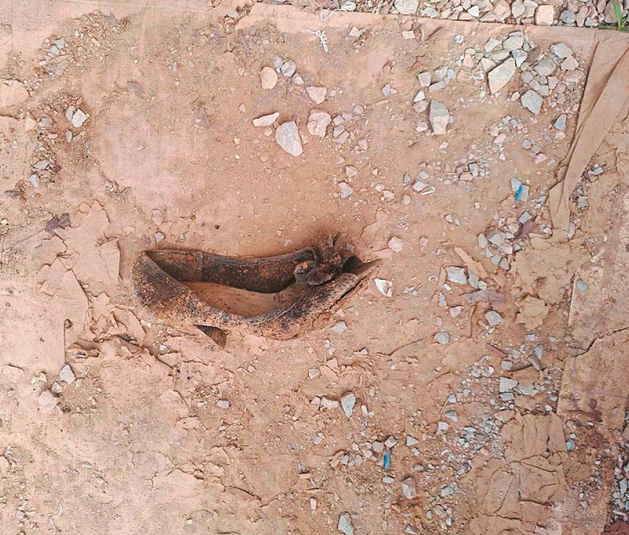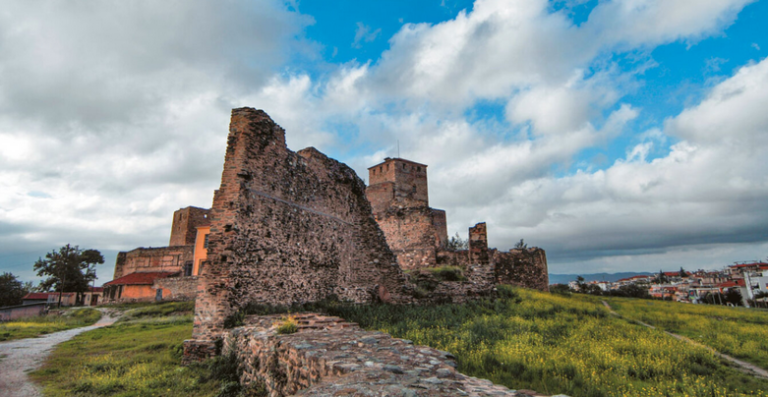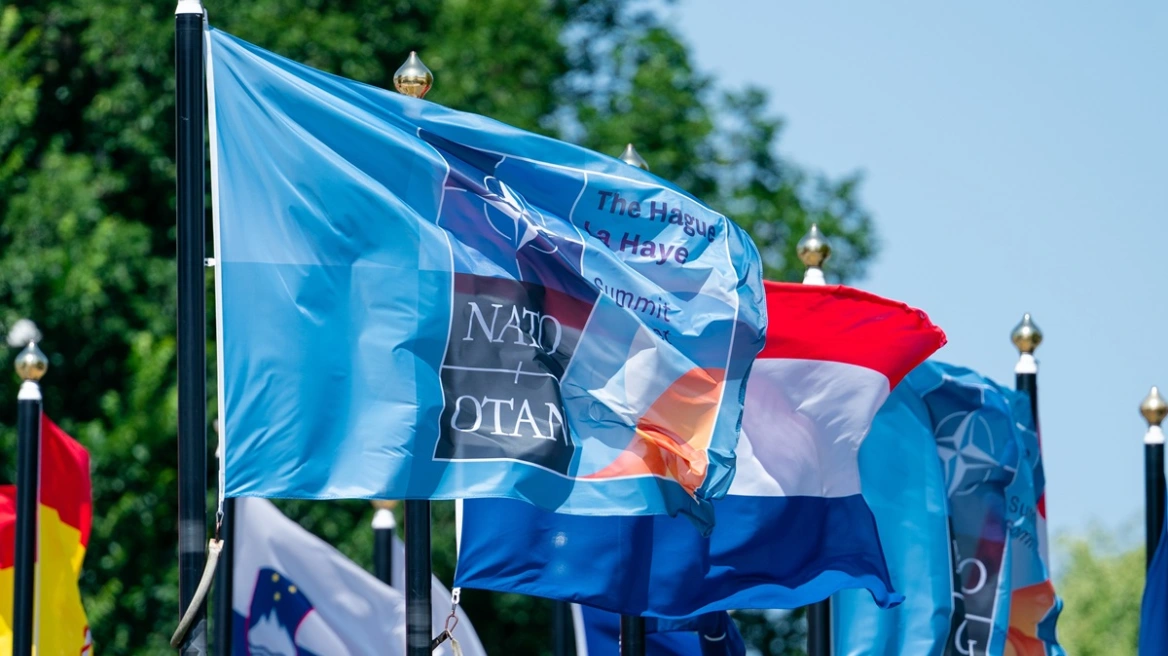The historical memory of the dark period of the Civil War was awakened by the discovery of six mass graves in the “usual place” of executions of political prisoners, outside the notorious prisons of Eptapyrgio (Yedi Kule). A total of 33 skeletons have been discovered, over 400 of which are estimated to have been those who were tried and executed during the period from 1946 to 1954. An attempt is now being made to at least re-identify them through DNA and perhaps some families to put an end to the history of the search.
A woman’s shoe, indicative of the gender of the person who took his last steps in life with it, before standing in front of the execution squad of the Extraordinary Military Court of Thessaloniki, is the only object found in one of the six mass graves that have been discovered in succession from late December until recently, opposite Eptapyrgio.

Historical irony? The pits in which people executed during the Civil War were buried were found around the National Resistance Monument, opposite Eptapyrgio, created by the Municipality of Neapolis-Sykeon. So far, a total of 33 skeletons have been identified.
“We were carrying out rehabilitation work in the area enclosed by Kanari, Solomou and Miaouli streets when the first skeletons were discovered,” Neapolis-Sykeon Mayor Simos Daniilidis describes to “THEMA”. “The work was stopped immediately, we notified the Archaeological Service, which very quickly determined that the bones belonged to people who had died and been buried there no more than 80-100 years ago. We knew that this particular area was used during the Civil War for the execution of political prisoners. Thus, although there was no archaeological interest, we requested the assistance of the Archaeological Service in order to continue the excavation in the appropriate manner. Indeed, we continued with the help and supervision of archaeologist Stavroula Tzevreni and in the following period we identified a total of 33 skeletons. There may not be any archaeological interest, but the historical and political interest is enormous”, adds Mr. Daniilidis.

Kouzinopoulos’ research
“From historical sources we know that during the Civil War period, and later, over 400 political prisoners were executed in Yedi Kule and were buried, or rather, dumped, in the surrounding area which was then uninhabited, the nearest houses were approximately 1.5 kilometers away”, says journalist-author and historical researcher Spyros Kouzinopoulos. For him, the Gendí Koule was the subject of long-term research, which is reflected in his book “Yedi Kule, the Bastille of Thessaloniki”, which was released the day before yesterday by Ianos Publications. The Eptapyrgio was permanently closed in 1989, but earlier, Mr. Kouzinopoulos had obtained special permission to research and record data and information from the prison archives.
As Mr. Daniilidis says, the excavation will continue north and east of the points where the mass graves were discovered. For Mr. Kouzinopoulos, however, there are no great expectations for the identification of a larger number of victims and in no case all of them. “During the 60s and 70s, during the junta period, reconstruction in the area was intense. “There are testimonies that when digging foundations, they found bones, but they did not hand them over, since they did not want to risk delaying the construction. On the contrary, they buried them even deeper,” he explains. According to him, at least 400 people who were executed during the German occupation were buried en masse in other places, more organized than the pits of Yedi Kule, which are more or less known, but the bones have not been recovered.

“Naked in the Pits”
“The only space left is essentially where the National Resistance Monument is located,” notes the author-historian.
The revelation of Thessaloniki’s hidden secret also brings to light details of the savagery that accompanied the executions, based on the decisions of the Extraordinary Military Court of Thessaloniki. “The woman’s shoe is the only object that was found and indicates the victim’s gender. No remains of clothing were found, since they were thrown into the improvised pits naked, thus stripping them of their dignity after death,” says Mr. Daniilidis.
“The pits were dug by criminal prisoners who were given the right to take from the executed whatever they had: an object, clothes, shoes, whatever they could possibly either use or sell in prison,” explains Mr. Kouzinopoulos. The Extraordinary Military Court of Thessaloniki had jurisdiction over the regions of Thessaloniki, Imathia, Pieria and Kilkis, however political prisoners-executives of the Left were also transferred to Eptapyrgio from prisons in other regions, from which it was judged that it was easy to escape and which were not considered so “safe”.
“The skeletons that were found are in good condition. In some skulls, in fact, the hole in the forehead from the shot is visible, while bullets were also found. Based on the dentures, at least six of the skeletons belong to minors,” explains Mr. Daniilidis. The Municipality of Neapolis-Sykea immediately informed the General Police Directorate of Thessaloniki in order to conduct a DNA test at the Crime Labs. At the same time, it has urged relatives who never learned where their loved ones were buried to contact the municipality’s telephone number 2323 313126, to leave their details in order to determine whether they are related to those found in the mass graves. “We have already received many phone calls from people who, after so many decades, are searching for the fate of their relatives who were executed during the dark period of the Civil War, but also later, up to 1954-55,” says Mr. Daniilidis.
Funeral procession
In this direction, most of the skeletons have already been handed over to the Police for examination and determination of age and time of execution, so that they are available to relatives and descendants, in order to carry out DNA checks and cross-checks.
At the same time, the Municipality of Neapolis-Sykeon is taking the initiative to build a burial monument at the site where the skeletons were found, while an agreement has been made with the Metropolis of Neapolis-Stavropol to sing a funeral procession for the people “who went unburied”.
There were not a few, however, who had persistently requested to receive the bones of their people. Mr. Kouzinopoulos describes characteristically the case of Eponitis Nikos Nikiforidis, who was executed on March 3, 1951, at the age of 23. He had located his file during the research he had done in the archives of Yeddi Koule. “Nikos Nikiforidis was from Athens, from Pagrati, he was executed along with five other people and they were all buried together. The accusation against him was that he was collecting signatures, along with others, mainly students, from Thessaloniki for peace. His mother Eugenia Nikiforidis had sent a letter to Frederiki asking for her child’s bones, so that she could bury them in Athens, to have a grave to go to or at least to be told the place of burial, so that she could make a trisagion and put a cross at the spot. The Palace referred the letter to the 3rd Army Corps, from there it went to the 87th Military Command, to end up at the Directorate of the Military Prisons of Eptapyrgio and to finally be given the answer that her child’s bones could not be sorted, since he had been buried with five others. “We don’t know where his bones are,” they told the mother. “And therefore, the sorting of his bones is impossible except for his relatives,” said Pantelis Kinzonidis, the commander of the Military Prisons of Thessaloniki, in his response, leaving open the possibility of a cremation: “We believe that the relatives of the executed person, in consultation with the competent authorities of the criminal prisons, can carry this out.”
Ask me anything
Explore related questions





